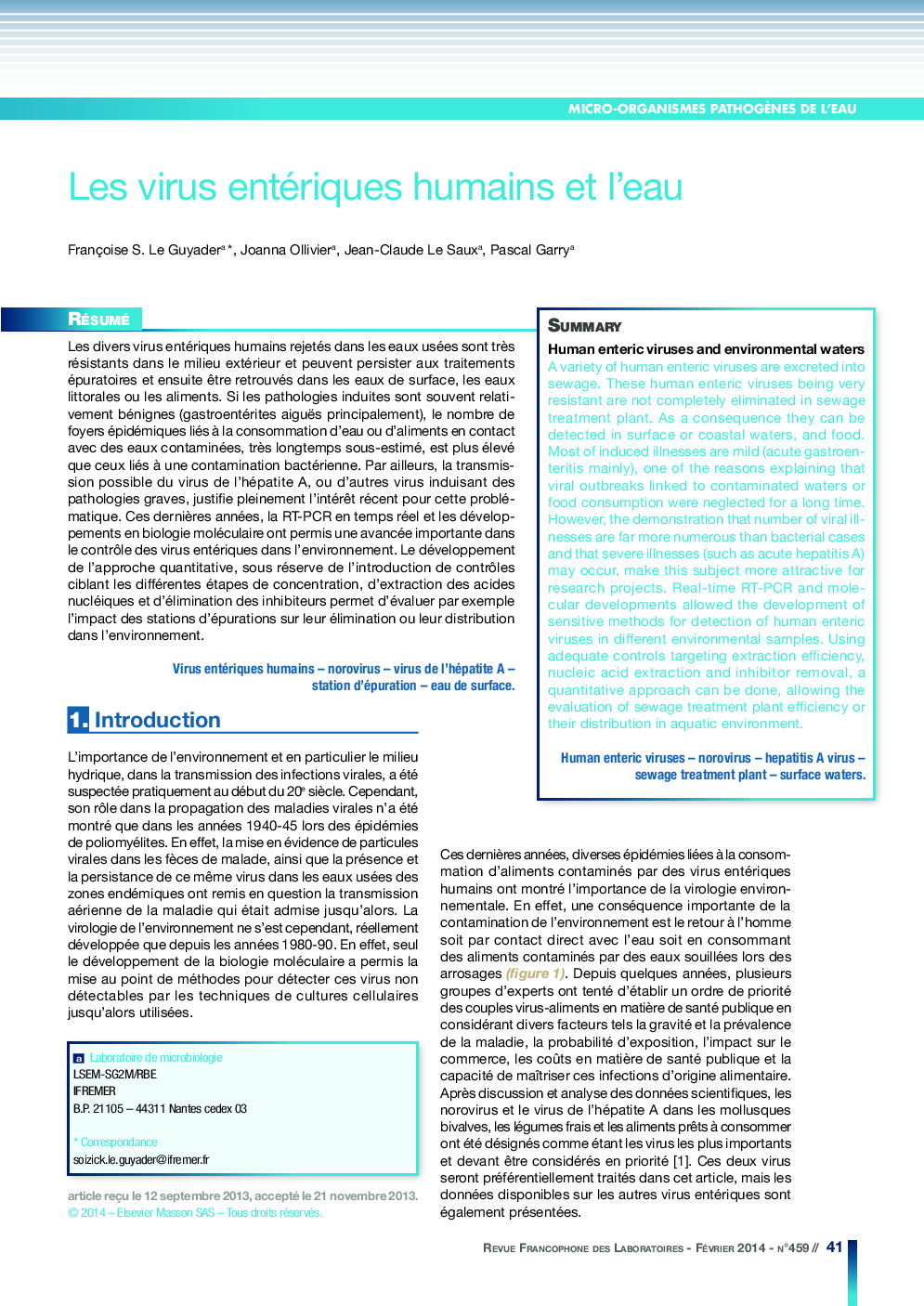| Article ID | Journal | Published Year | Pages | File Type |
|---|---|---|---|---|
| 7650086 | Revue Francophone des Laboratoires | 2014 | 9 Pages |
Abstract
A variety of human enteric viruses are excreted into sewage. These human enteric viruses being very resistant are not completely eliminated in sewage treatment plant. As a consequence they can be detected in surface or coastal waters, and food. Most of induced illnesses are mild (acute gastroenteritis mainly), one of the reasons explaining that viral outbreaks linked to contaminated waters or food consumption were neglected for a long time. However, the demonstration that number of viral illnesses are far more numerous than bacterial cases and that severe illnesses (such as acute hepatitis A) may occur, make this subject more attractive for research projects. Real-time RT-PCR and molecular developments allowed the development of sensitive methods for detection of human enteric viruses in different environmental samples. Using adequate controls targeting extraction efficiency, nucleic acid extraction and inhibitor removal, a quantitative approach can be done, allowing the evaluation of sewage treatment plant efficiency or their distribution in aquatic environment.
Related Topics
Physical Sciences and Engineering
Chemistry
Analytical Chemistry
Authors
Françoise S. Le Guyader, Joanna Ollivier, Jean-Claude Le Saux, Pascal Garry,
